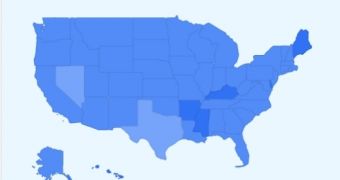Google figured out that, by tracking user queries on flu symptoms, it can predict ascending or descending trends of influenza spread throughout the United States. So Google.org, the company's philanthropic arm, created Google Flu Trends, a division that will provide users with detailed daily estimates of flu cases.
Thus far, in the short time that GFT has been alive, its statistics closely matched those of the US Center for Disease Control (CDC), with the sole exception that they were a couple of days faster. This makes perfect sense, considering that CDC's data comes from all around the country, so it has to be centralized and then interpreted. GFT collects its information from users directly.
And while the numbers in themselves may differ between the two sources, that's only understandable, seeing how healthy people, working on projects or simply browsing, may want to learn more about the flu without actually being infected by the Human Rhinovirus (HRV), the main cause of the disease.
However, Google Flu Trends was created taking into account the fact that sick people are more likely to start searching for their symptoms on-line than other people. The good thing about GFT is that it can warn CDC about influenza outbreaks with a few day head-start, seeing how it records and processes data faster. This could prove invaluable in preparing hospitals for the large influx of patients normally associated with such an event.
"Even outside of pandemics, just with seasonal flu, the severe years can really stress health care systems," argued Neil Ferguson, working at Imperial College London, in the United Kingdom. By extending this service to other diseases as well, CDC analysts could benefit from an advanced statistics tool that is capable of recording trends in real-time.
Larry Brilliant, head of Google.org, says that the technology used by the application can easily be converted to cover other medical conditions, but also argues that the flu is undoubtedly one of the most spread diseases out there, which is exactly why his division started tracking it in the first place.

 14 DAY TRIAL //
14 DAY TRIAL //